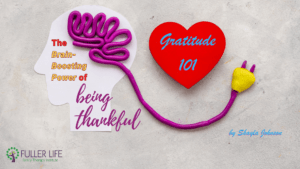Covered in Red: How the Brain Uses Anger to Hide Pain
Thats it! You have had enough. Someone around you has done the very thing you hate. Almost immediately, you see red. Or maybe the anger slowly brews and builds rage over a long period of time.
What is really happening underneath the anger? Some mental health professionals refer to anger as a secondary emotion. According to Dr. Harry Mills, anger is the emotion we are most aware we are experiencing. However, anger usually just hides the presence of deeper and less comfortable emotions like sadness, guilt, embarrassment, hurt, fear, etc.
The Anger Umbrella
If umbrellas are protective devices that we use to shield ourselves from exposure to the elements, then we can see anger in a similar way. Anger can seem like an exhibition of power, potentially making a threatening presence back away. It can be loud, volatile and tense. Clinical and forensic psychologist, Dr. Steven Diamond explains that this can be very useful in the face of a true threat. Suppose an attacker lunges at you and you have nowhere to go. Anger would propel you into defense mode much more than fear, possibly saving your life.
But what anger can also do is shield others and sometimes ourselves from seeing the pain, embarrassment or other more vulnerable emotions that exist underneath. If your friend or spouses actions have triggered hurt for you and you believe feeling hurt may show weakness, being mad is likely to step in to try to ensure that no one takes advantage.
Anger and the brain
Interestingly, the brain moves us very quickly from these primary emotions to anger. It can happen so fast that we hardly even notice the switch unless we are aware enough to do some reflective backtracking. Dr. Seltzer describes how the brain releases the hormone, norepinephrine, into the bloodstream to numb mental or physical pain during a mad response. Basically, the brain uses anger to hide pain.
The Truth Shall Make You Free
Why is it important to expose the truth behind your anger? Because dealing with the root issue is much more effective than simply managing the anger symptoms. Oftentimes, in sessions with clients, I find that anger dissolves once the actual emotions behind them are identified. I can visibly see anger give way to the revelation of sadness or embarrassment. Once the client is honest about his thoughts and feelings, he is better able to process and heal from the root issue.
Steps for Unmasking Anger
The next time you recognize yourself responding in anger, try working through the following steps:
- What thoughts are connected to the anger? Suppose you are angry with your partner about not spending time with you. You may be thinking, He doesn’t want to spend time with me which may lead to the thought, He doesn’t think Mi worth spending time with.
- What other feelings come up? When you identify the thoughts connected with the anger, you can then work through the deeper emotions connected to the thoughts. Take a moment to sit with the thought. Maybe you can journal about it. For instance, if you say to yourself, my partner doesn’t think that I’m worth spending time with. This may uncover feelings of sadness, hurt or low self-worth from beneath the irritation.
- What do I do with what I have? Now that the thoughts and emotions within the anger have been identified, it is time to work through them and decide how you can respond in a way you value. Having new information about how you are thinking, and feeling might give rise to new issues that need to be addressed. In the example above, you realize your belief is your partner does not think you are worth spending time with and this is connected to feelings of hurt and low self-worth. This enables you to talk with your partner from a more self-aware position and potentially improves understanding. Also, You could also talk to yourself about your beliefs. Take time to consider how you determine your self-worth and if it is healthy.
Living Life Uncovered
You might notice that developing a habit of hiding painful emotions leads to habitual rage. Such a lifestyle of anger destroys relationships and creates bitterness. Have the courage to allow yourself to own the truth of your experience. Otherwise, holding onto hostility can keep you stuck.
There is a time and a place for anger to be expressed in healthy ways. Stay tuned for the follow-up to this blog to find out what healthy anger looks like.
Additional Resources:
Contributed by Shani Bell, MAAT, LPC-Intern
Supervised by Dr. Amy Fuller, PhD, LMFT-S, LPC-S
See these articles about anger:

Gratitude 101: The Brain-Boosting Power of Being Thankful

5 Ways to Start Healing Depression Today











